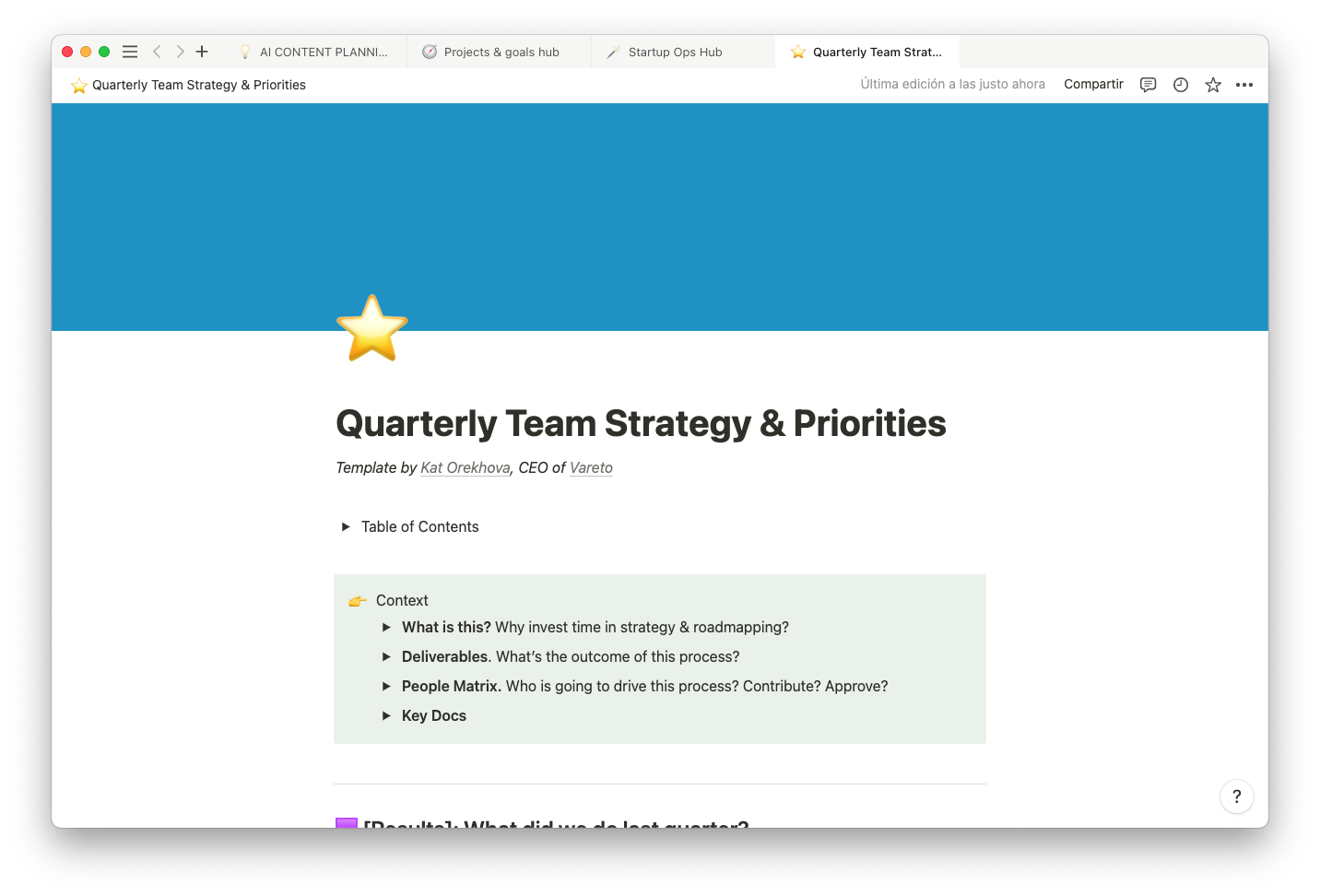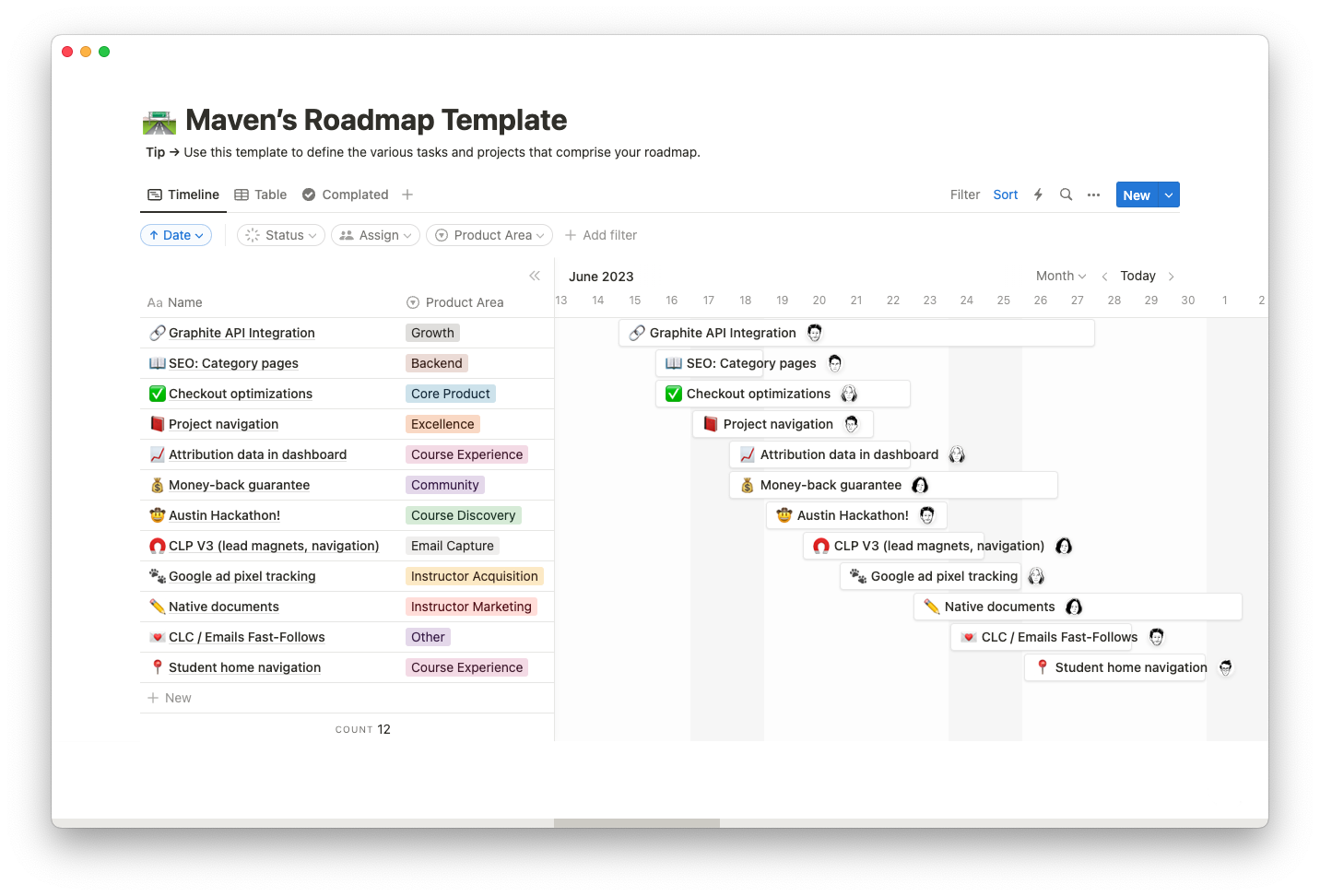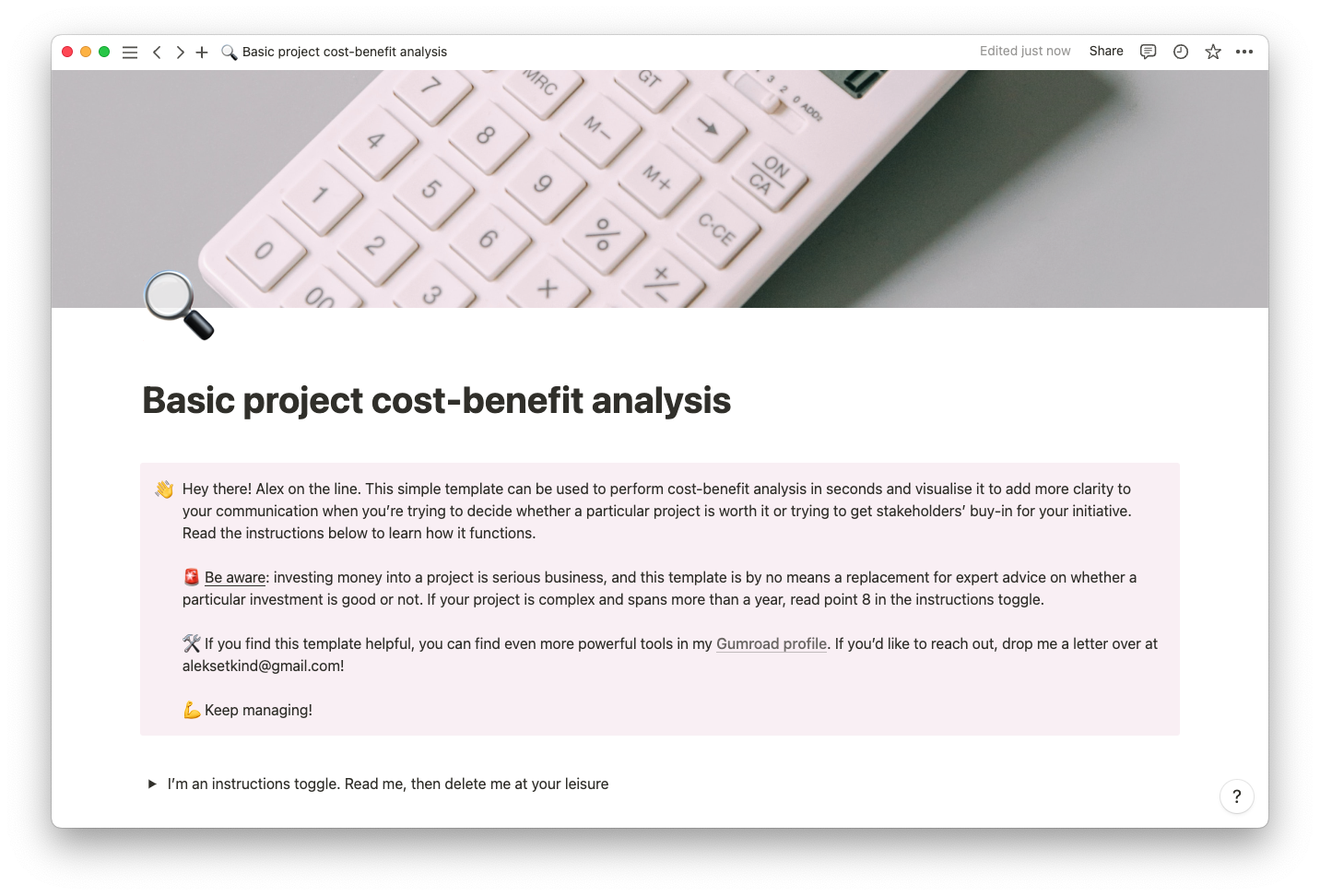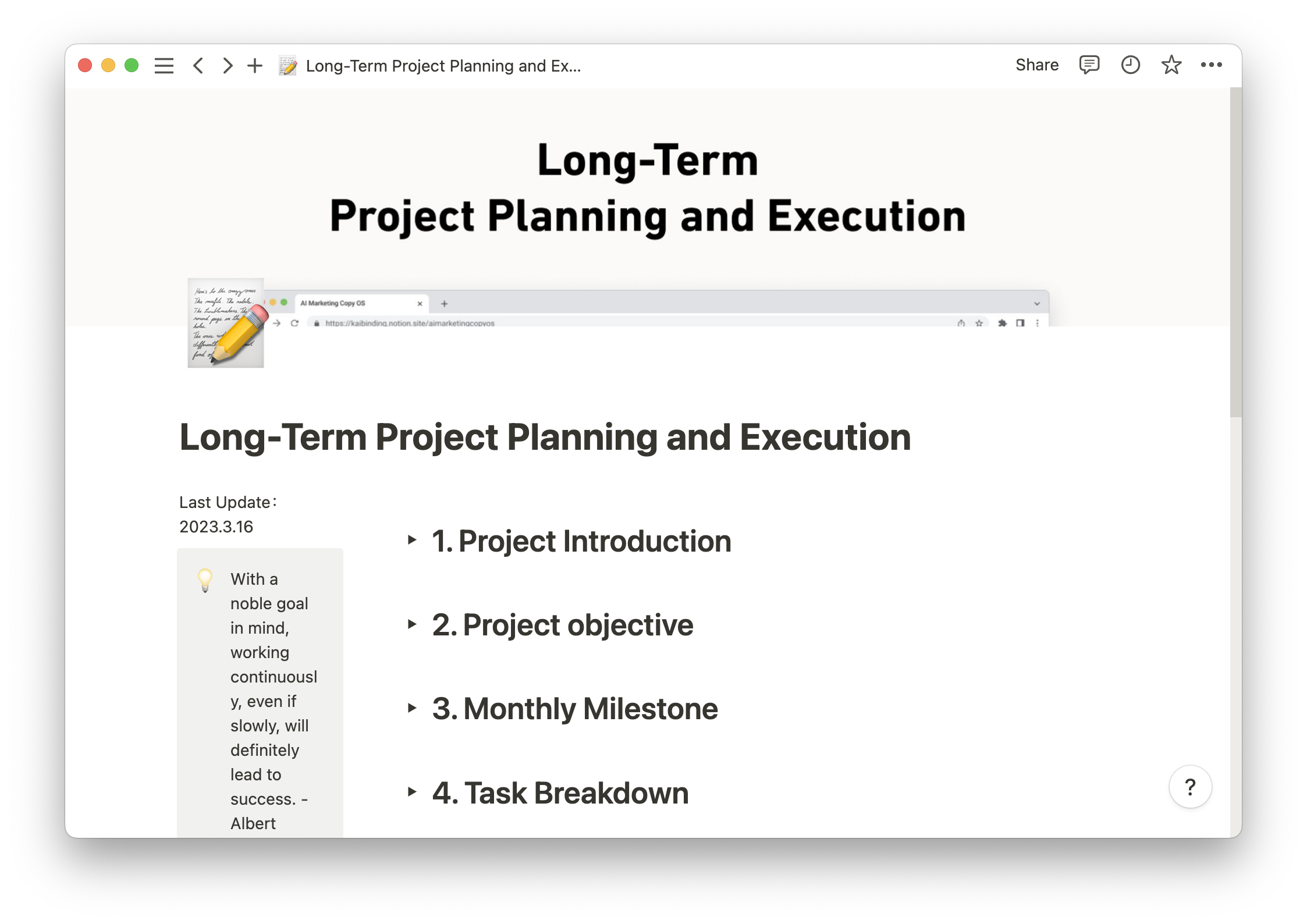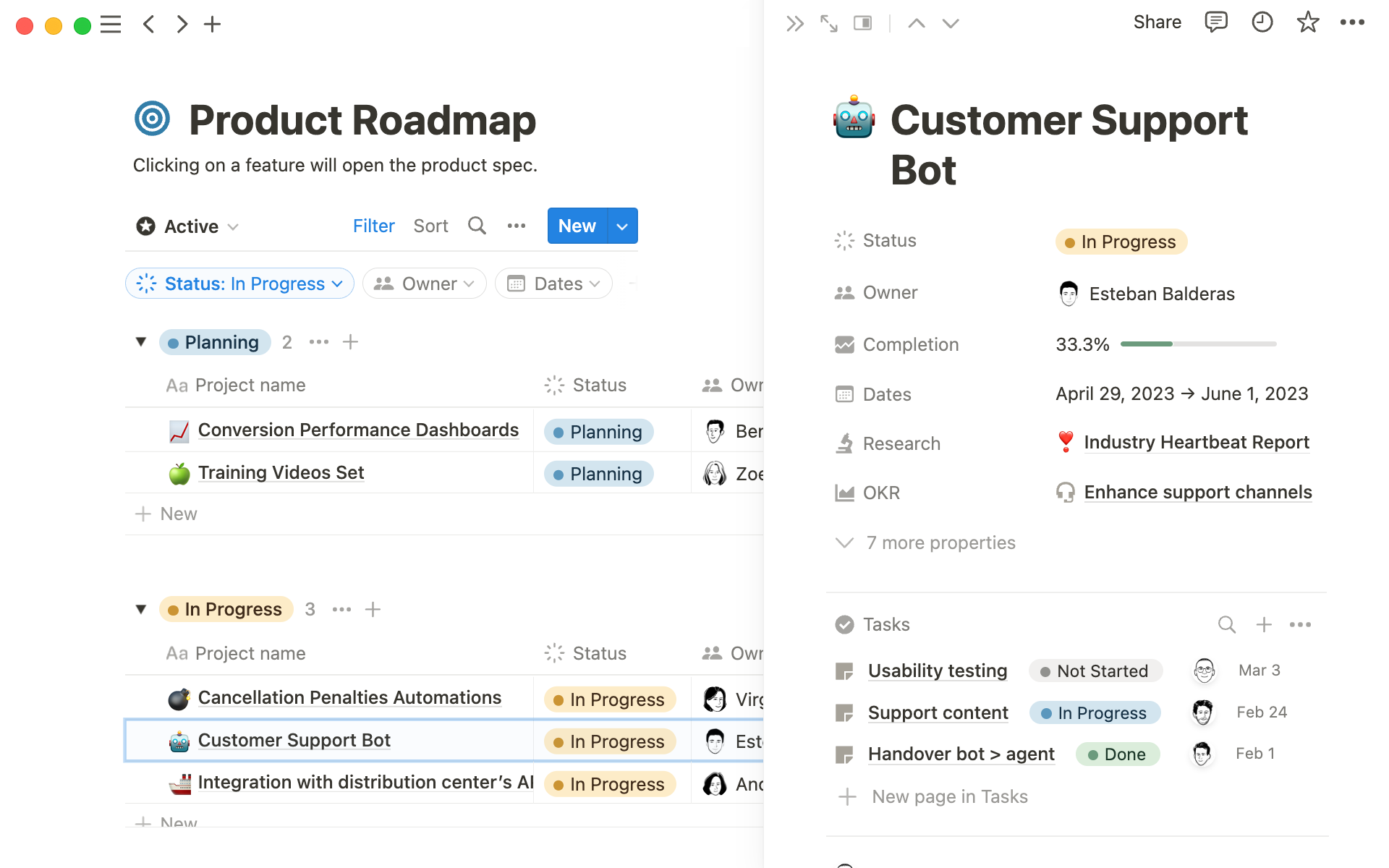Just because your project has a plan doesn't mean it's ready to kick off.
There's often a gap between company vision and project execution that managers miss. But that’s precisely where they should send their attention, since projects that are misaligned with overarching business goals waste company resources.
That’s where a strategic roadmap comes in. These maps showcase effective initiative execution while ensuring every step of the way aligns with a company’s high-level vision.
Before your team gets started, offer them an efficient and effective way forward with a strategic roadmap.
What's a strategic roadmap?
A strategic roadmap is a visual representation of an organization's short and long-term strategic plan. It stands between vision and execution, outlining the long-term goals and every step required to achieve them. Think of it as a path for your team's journey, with milestones, key initiatives, and timelines clearly mapped out.
Unlike a traditional project roadmap, a strategic one offers a broader and longer-term vision of the company’s path forward. It goes beyond a single project’s scope and timeline, showcasing various initiatives across a longer time frame.
The importance of developing a strategic roadmap
Having a strategic roadmap is like driving with GPS — the path is clear, and everyone in the car knows where they're heading.
Here are a few more benefits of creating and working from a strategic roadmap:
Better team communication — a strategic roadmap ensures everyone’s on the same page regarding the organization's strategic planning. When teams have a shared reference point, it becomes easier to communicate priorities, allocate resources, and coordinate efforts across various departments.
More user-focused development — your product strategy may look great on paper. Still, efforts go to waste if it fails to meet customer needs. Roadmap planning guarantees that your clients and users remain at the forefront of your strategy. By mapping out key initiatives and timelines, you can prioritize features and improvements that directly address customer pain points and deliver value.
Higher productivity — better initiative visibility means you can assign the right people for each task to avoid unnecessary work duplication. And there’s less wasted time on efforts that don’t align with the company’s core goals.
The differences between strategic and product roadmaps
While both strategic and product roadmaps include product development information, like milestones and timelines, the former showcases when various products within a company’s portfolio will be created and launched, and the latter maps out a single item’s development, like so:
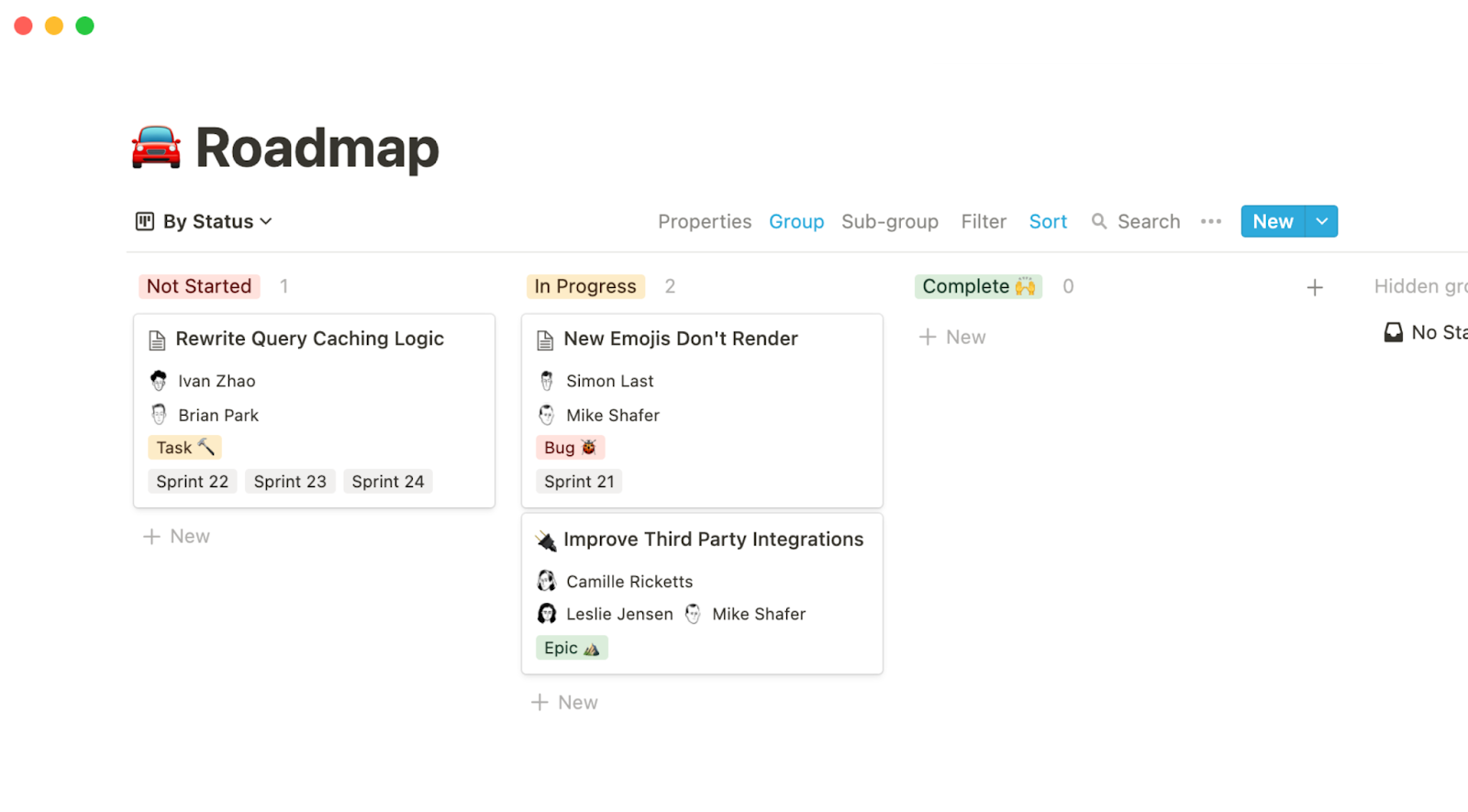
How to create a strategic roadmap in 7 steps
Strategic roadmapping directs your efforts to the actions that matter the most. Follow this seven-step guide to gain a more purposeful vision of your team’s future, turning it into a strategic roadmap template you can use organization-wide.
1. Define your vision and objectives
Conduct an in-depth review of your organization's mission, values, and overarching goals. Engage with key stakeholders, including senior leadership and department heads, to gain diverse perspectives on the group's vision.
Consider asking this leadership group the following questions:
What do we want to achieve in the next three, five, and 10 years?
Why do we want to achieve these things?
Who’s our target audience — who do we want to help with our product portfolio?
Translate your answers into SMART goals — specific, measurable, achievable, relevant, and time-bound — to set a clear direction for the future.
2. Identify key action items
With core company goals in hand, determine the specific projects and accompanying action items your team must complete to achieve them.
This is a great chance to conduct feasibility tests and SWOT analyses to determine whether your team can achieve each action item in the timeframe you’re hoping for, making adjustments as necessary.
3. Set priorities
Not all initiatives are of equal importance or urgency. For instance, you can't focus on market expansion when your primary product needs significant improvements.
Prioritize products and features based on their strategic importance and potential impact, considering factors like resource availability and market trends. You might use an Eisenhower Matrix to determine each item’s spot on your prioritization list.
4. Create a timeline
To create an accurate general timeline, start by discussing approximate project time frames with each project manager. Add these until you have a long-term timeline that covers each initiative with wiggle room for delays. Be realistic about your deadlines, considering the complexity and dependencies between projects.
5. Allocate resources
You have a list of projects you must complete to meet crucial company goals along with a flexible general timeline — now you need to ensure your team has what they need to make it happen. Inventory your current resources, assessing necessary hiring, budgetary, and technology gaps. And create a comprehensive contingency plan that describes what you’ll need to do if challenges affect resource expectations.
6. Track performance
Before starting strategic roadmap execution, choose the key performance indicators (KPIs) you’ll use to track success. You should also create a monitoring and reviewal schedule designated teammates will action to ensure you’re on top of roadblocks and deviations. As teams work toward each milestone and goal, you can assess how accurate initial planning was and where there’s room to improve.
7. Communicate and align
Gain primary stakeholder approval for this strategic plan, then share it somewhere central so managers can view and adjust it as necessary. When changes are made, host meetings to discuss why updates were made and what they mean for each team.
3 strategic roadmap examples
Strategic roadmaps are well-suited to most industries and company planning scenarios. Here are a few examples of this planning type’s reach:
Product development and launch — when a technology company plans to introduce a new product line, a strategic roadmap helps coordinate various aspects of the development process. Besides outlining product development stages, it also outlines marketing and sales initiatives over a multi-year period. This ensures that all teams work harmoniously to meet the launch deadline, aligning the product's release with the company's overall growth objectives.
Market expansion — for an international retail chain aiming to expand into new markets, a strategic roadmap becomes crucial, as it outlines every step, from market research and store openings to supply chain adjustments and local marketing campaigns. This roadmap facilitates a smooth expansion process and ensures that each new location contributes to the company's global growth strategy.
Digital transformation — if a traditional manufacturing company decides to undergo a digital transformation to improve operational efficiency and stay competitive, a strategic roadmap guides the transition from legacy systems to modern technologies. The roadmap ensures that the digital transformation aligns with the company's long-term goal of remaining an industry leader.
Top-of-the-game tools for your initiatives
Take your strategic planning to the next level with Notion. From outlining strategic initiatives to performing a SWOT analysis and roadmap planning, there’s a template that eases the process. And leverage Notion AI to take some of the repetitive work of time tracking and roadmapping out of strategic planning. Try it today.

